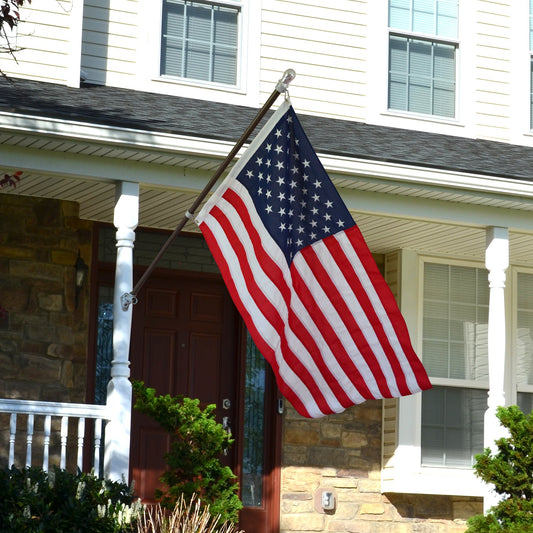
Considerations for Commercial Flagpole Installation in NJ
In New Jersey, as in many places, installing a commercial flagpole isn't just a matter of planting it in the ground; you must consider various factors, primarily from a safety and compliance perspective. We've seen and done it all as pros in flagpole installation for commercial, government, and residential properties. Here are some key considerations, particularly understanding ground conditions, when choosing a location for a commercial flagpole in New Jersey.
The Three Most Important Considerations for Commercial Flagpole Installation in NJ
- Local Zoning and Ordinances: New Jersey municipalities can have specific rules and regulations regarding flagpole installations. Ensuring your flagpole meets local height restrictions, setback requirements, and other stipulations is crucial to avoid legal complications and potential fines.
- Utility Lines: Underground utility lines are a significant safety concern. Before digging, you must contact the 811 service in New Jersey. Accidentally damaging utility lines can lead to interruptions, costly repairs, and dangerous situations, especially if gas, water, or electrical lines are involved.
- Ground Composition: Understanding the ground conditions is vital given New Jersey's varied geology. Coastal areas with sandy soils may not offer the stability required for a large flagpole. Conversely, inland areas' rocky or clay-rich soils might require different installation techniques. The foundation's integrity is paramount for the flagpole's long-term stability and safety.
While all considerations are essential, these three stand out as they address legal compliance and foundational safety – two areas where oversights can lead to significant consequences. Flying a flag outside a business has many benefits, so all these considerations are worth the time and energy.
Other Considerations
Water Table: Some areas in New Jersey have a high water table, especially regions closer to the coast or low-lying areas. If the water table is too close to the surface, it can interfere with the flagpole's foundation. You might need to choose an alternative location or invest in a specialized foundation.
Wind Load: The structural integrity of the flagpole depends on its ability to withstand winds. Consider the wind speeds typical of your area. Coastal regions or open areas might experience stronger winds, requiring sturdier poles and foundations.
Accessibility: While this isn't strictly about ground conditions, accessibility is crucial. The location should be accessible for installation and future maintenance, especially if you need machinery or large vehicles to reach the top of your flagpole.
Drainage: Ensure that the location has good drainage. Prolonged exposure to stagnant water can weaken the flagpole's foundation over time.
Visibility and Aesthetics: Besides the technical aspects, consider where the flagpole will have the most visual impact. It should be where the intended audience can easily see it without obstructing views or traffic.
Safety: Always ensure there's enough clearance around the flagpole. This means it shouldn't be too close to buildings, trees, or other structures, especially if there's a risk of the pole falling.
Consider everything before buying and installing commercial flagpoles. With our team's help, you do not have to go through the process alone. We have the tools, experience, and drive to install flagpoles correctly the first time. Call us today for more information or if you are ready to take the next steps.










